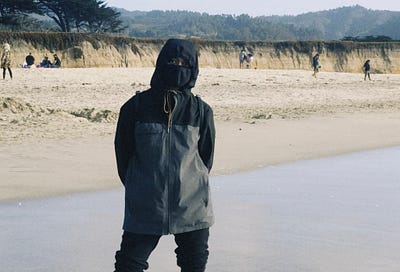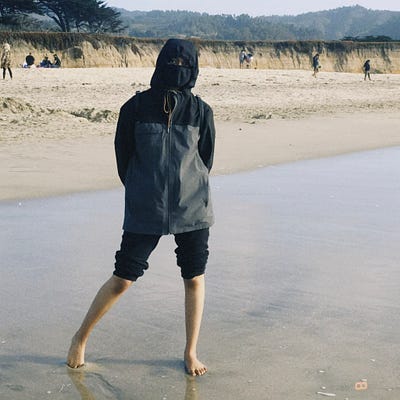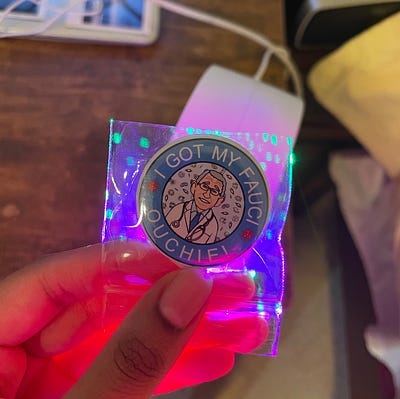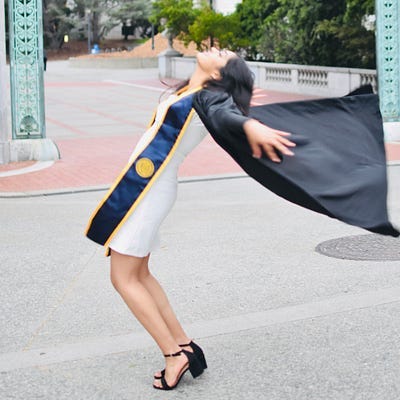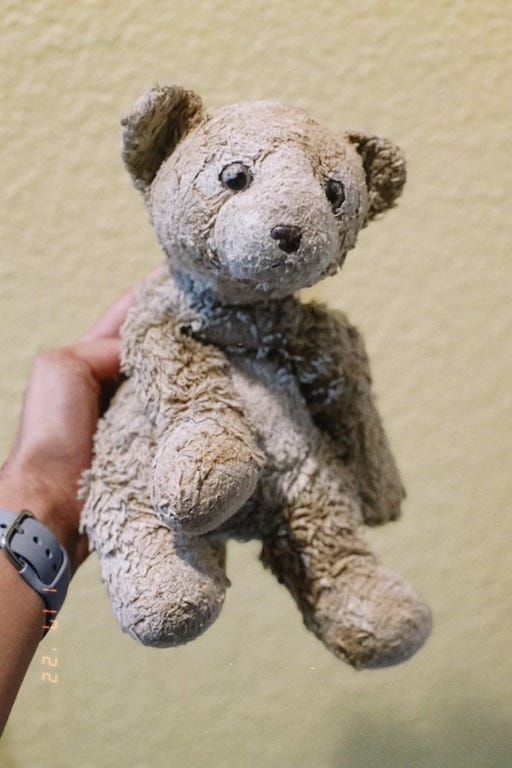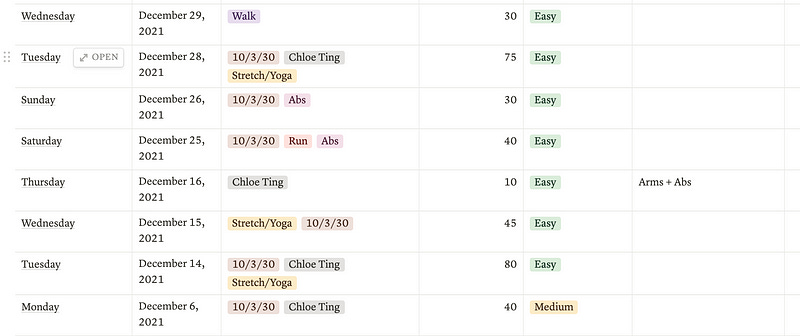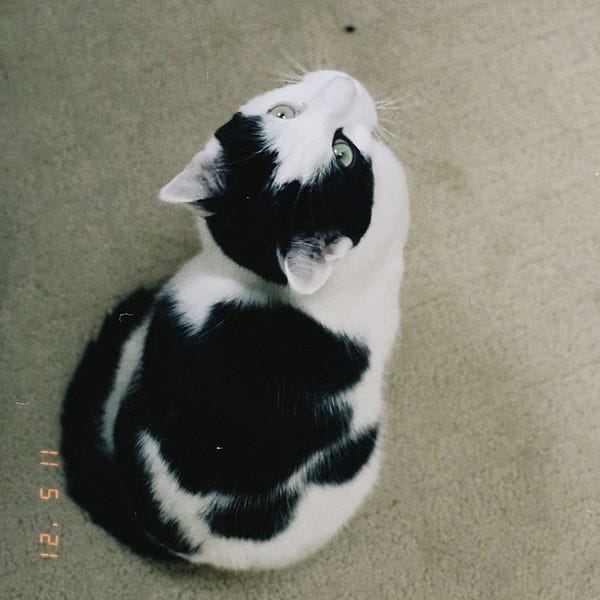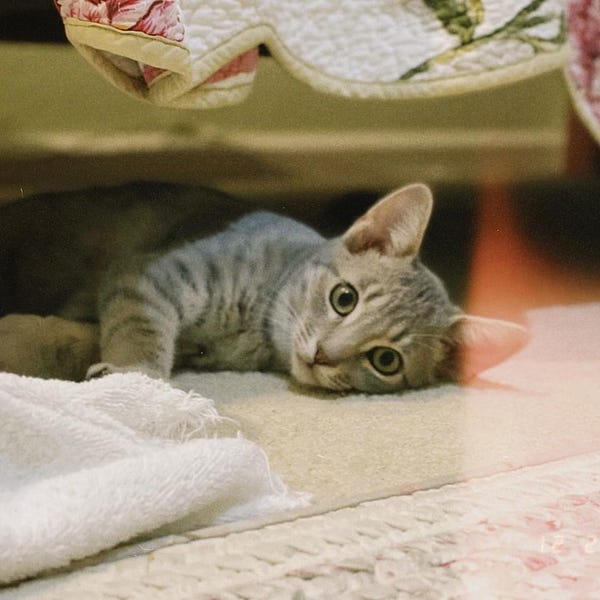Lessons I Learned in 2021
2021 was a chapter of extremes and, as always, a year of growth. I travelled for four months with friends and spent four months at home…
2021 was a chapter of extremes and, as always, a year of growth. I travelled for four months with friends and spent four months at home with family. I shed my identity as a full-time student for the first time in 22 years and adopted the shiny new title of “working professional.” I lived as an extrovert and introvert, felt my most adult and my most childish, and operated as both my worst critic and biggest supporter. Here are some of the most defining lessons I carry in my pocket from 2021 as I roll into 2022. It certainly was one heck of a year.
1. Learning my seasons and embracing all of them.
There is no single way to live optimally. I spent my summer post-graduation traveling the world in an optimistic post-vaccine, pre-delta variant world. I measured my life in new experiences and time with friends. Monday evenings were saved for “getting my sh*t together” and planning every single waking moment of Tuesday through Sunday, packing it with as much discovery, excitement, and socializing as possible.
At the end of August, I headed back to my childhood home in the Bay Area suburbs as lockdowns creeped back in and friends moved back to school or moved on to new cities. I grappled with living the polar opposite of the life I sought after to optimize my happiness. The most exciting activity I did outside of work on a typical weekday was walk around the the same lake path I’d traversed hundreds of times over 22 years. Over the weekends I would attempt to resuscitate my old cadence of socializing by making frequent trips to SF, Berkeley, and Palo Alto. I had plans to move out which were repeatedly sabotaged by the ever-fluid nature of Covid impacting plans in the most inconvenient of ways. I just could not find a way to make my life into what I’d deemed was the best for me. It felt like life was wasting away and I wasn’t able to change anything about it.
While the world around me didn’t change, after four months of living at home, my definition of optimal living has changed. Three months ago, optimal living was exploring the world around me and today, optimal living is exploring the world within. Optimal living for me is waking up early, exercising, having a productive day pursuing my goals, getting locked into a good book for hours, and being so absorbed in my artistic pursuits that I can hardly fall asleep because of the excitement. I’m returning to the sources of happiness I pulled from as a young child.
I’m still optimizing for the same things: short term and long term happiness as well as pursuing my goals, but I’ve learned to go about it in two drastically different ways. The seasons of life are constantly changing. Sometimes, there are periods of socialization and excitement. In others, there are periods of isolation and free time. Many times, despite our best efforts, which season we’re in can be out of our control. Now that I’ve learned how to be “optimal” and find happiness in both modes, I hope to no longer feel that sense of fear and hopelessness when the seasons of life inevitably change.
2. Getting off of the consumerist hamster wheel and treasuring what I have.
One of my most vivid childhood memories is of a persistent little me in tightly-braided pigtails begging my mom to buy me a lion cub stuffed animal from the gift shop at the Oakland Zoo. “No,” my mother tiredly retorted. “You’re just going to throw it on the floor and it’ll be forgotten like the rest of your toys.” At the moment, I knew that she was 100% right. I was also fiercely determined to prove her wrong. I promised that this time would be different.
So, I proudly brought the creature home and christened her as “Kiara, daughter of Simba,” a not-so-subtle plagiarism of The Lion King 2. Poor Kiara endured the most torturous love she could have possibly been subjected to, complete with bubble baths (in which she lost a good amount of her stuffing), hair cuts (to which she, to date, suffers some unfortunate premature balding), and “jumping acrobatics” in which I would fling her in the air, her wiry, stuffing-depleted limbs flailing in weak resistance. Every night I would envelop what was left of Kiara with the tightest of hugs and softly whisper bedtime stories to her, filling my whole world with just the two of us.
Had my mother not said anything, I would have, guaranteed, thrown Kiara on the floor and promptly forgotten about her existence. By being intentional that this was an object that I would value and take care of, I was able to obtain more value from it than I would have otherwise. I think this is the core tenet of minimalism. It doesn’t necessarily mean owning very, very few things and living with the bare minimum. Instead, it means understanding how every item you own and every new purchase fits into and adds value in your life in the long term.
In particular I’ve felt this ever faster spinning hamster wheel in the fashion industry, leading to vastly unnecessary expenses that women in particular are subject to. Clothing trends are flitting in and out faster than ever with the advent of rapidly consumable short-form content. One way I’ve worked to counteract this in my life is by ensuring the clothing I own is “classic” in style and is unlikely to go out of fashion. I keep a list of things I want to buy and let it sit for a long, long time before I go ahead and make any purchase. I’ve also started sewing my clothes when they tear or tailoring them when do not fit me well. Lastly, I’ve focused on more neutral, easily matchable colors since I’ve found that statement pieces with bright colors and rare opportunities for use lose their novelty rapidly over time.
Minimalism, to me, also means finding a good home for the items you want to get rid of. I learned this year that most clothing sent to donation centers are simply burned, and I myself am guilty of spending years justifying buying new clothing by clearing out my closet, donating clothes, patting myself on the back, and proceeding to refill my closet with new clothing.
Of course, the concept of minimalism extends beyond clothing. For me in particular, I no longer buy new electronics unless it’s something I desperately need, I stopped buying physical books as I can read off of the Kindle App on any of my devices or borrow books from the library, I avoid buying groceries that I am not 99.9% sure I will finish, and I always save leftover food. I also try to gift meaningful experiences when I’m not sure that I can give someone a gift that they truly want or need.
My goal is to maximize the worth of what I own and minimize any waste I generate. When I do spend money, I want it to be on experiences — food, drinks, places, and people— because they will never diminish in value. Regardless of my constant thinking, rethinking, and overthinking, I still wrestle with the frequent, tempting notion of “if I had just this one other thing, I’d have everything I need.” So, I continue to work on myself and find new ways to grow.
3 . The value of sharing my work with the world.
If a tree falls in a forest, and there’s no one around to hear it, does it make a sound?
I love the arts and will eagerly dabble in painting, photography, music, dance, writing, film, poetry, and literally anything else I can express myself with. I’ve long enjoyed these through what Susan Cain, in her book Quiet: The Power of Introverts in a World That Can't Stop Talking refers to as flow:
“Flow is an optimal state in which you feel totally engaged in an activity…In a state of flow, you’re neither bored nor anxious, and you don’t question your own adequacy. Hours pass without your noticing.”
However, sharing your art with the world is walking the fine line between desiring a state of flow and searching for external validation. I developed immense stage fright as a child so in a sense, external validation directly impeded on my flow. I grew to dread performing but loved the act of preparing for performances, jamming in my room, and meeting new people along the way. An equivalent in the painting sphere was that I was so embarrassed by previous art I’d made that I would try to throw away or hide old artwork that wasn’t up to date with my most current standards of perfection.
After some years keeping my artistic creations mostly to myself and over time it started to feel… hollow. Something was missing. If art is a means to express myself in this world, creating art without sharing it made it feel meaningless. The beauty of art is showing the world the bare bones of who you are and what you stand for, whether or not you receive a positive response. It’s Van Gogh seeing the beauty of his world and capturing it in vibrant hues despite battling crippling mental illness and never receiving recognition while he was alive. It’s Frida Khalo boldly defying societal expectations of what it means to be a woman and with her unapologetic persona and raw, unfiltered depictions of life. I want to start sharing my work again to share a piece of myself with the world, free from any expectation for validation.
4. Finding role models when I feel directionless.
I was an awkward, perpetually angsty teenager sporting a poor attempt at side bangs when I first discovered YouTube. In its early days, before the hyperbolic rise of uber rich and famous social media personalities became a common occurrence, YouTube was a community with a few innovative personalities who made somewhat random content, mostly for fun. I spent my teenage years watching these personalities share their makeup routines, heatless hairstyles, and back to school hauls, unknowingly also learning about their positivity, innovative mindset, and ability to reflect wisely upon their own lives.
So when I graduated from college this past year as a twenty-something, shedding my identity as a student for the first time ever and staring deep into the gaping void that was the-rest-of-my-life, my instincts guided me back to YouTube. The beauty gurus and chaotic pranksters I’d so meticulously followed as a teen had, for the most part, morphed into sensible thirty-somethings with their own businesses, sound financial advice, and beautiful families. And then I watched.
Though my path rarely intersects with that of a content creator on YouTube, age reliably marches us through the same stages in life. As I watched, I learned about the lack of defined and frequent milestones I’d experience as a new grad and how many feel the need to hurry life milestones—moving out, getting a job, switching jobs, getting a pet, getting a house, getting married, etc. —instead being patient and letting these milestones happen in their own time. I learned about post grad depression and how moving back home can be both the best and worst decision of your new grad life. I saw how these creators utilized their free time in a working world to build side hustles from their passions, diversify their income streams, and set themselves up for a financially stable future. Through their eyes, I pieced together a clearer picture of what the next five years would be and what the next ten should be.
Not all of my role models come from YouTube, of course. The vast majority are mentors who have pioneered paths I hope to follow or older peers who embody values I admire. But my journey down the YouTube rabbit hole in 2021 brought me back full circle to my teenage self and served as a reminder to be proactive in searching for and learning from role models when the next steps in life are unclear.
5. Without the right motivation, it’s impossible to build a new habit.
I’ve made it through a fair amount of life by checking boxes. When the actual task I was doing absolutely gutted my dopamine supplies, the rush of marking a task as completed was a motivator I frequently relied on. However, this model proved to be ineffective when faced with the fluid, continuous, push-and-pull nature of habit building. Successfully building a useful habit, say, exercising regularly, can sometimes begin with disgruntled snail’s pace strolls around the neighborhood and grow with incremental steps. It can lead to rest days from soreness and even more rest days from compulsive laziness. It can lead to tossing health to the wind for a day while embracing a sustenance-by-chocolate lifestyle.
With a box-checking approach, I would have checked and unchecked my “build a habit of regular exercise” box hundreds of times until I was sick of pursuing what appeared to be a never-ending uphill climb. By celebrating even 25% progress towards my goal and letting go of the notion of unhealthy eating as a failure, I was able to overcome the all or nothing mentality which had made my prior fitness journeys such an emotionally taxing experience with days of unhealthy eating being tailed by guilt. Alongside letting go of box checking, I had to find a stable, long-term motivator to successfully instill a lifestyle of regular exercise. In my case, this ended up being mental health.
September 2021 was a low point for me, possibly the lowest to date. I started exercising by just needing to get out of the house, go outside, get some fresh air, and think. I went on walks, circling the same loop in my neighborhood for hours, until I felt like I was ready to face another day. It took me a week to realize that the catharsis I felt was better than what sleep, doing an hobby I loved, or traditional “self-care” activities could give me. Though these tools would help me relax to an extent, only exercise could fully unravel any stress I’d gathered throughout the day. Since September 2021, it’s been a slow build up of hiking, cardio, and weight training, each addition making me less stressed and more energetic about pursuing my goals. It’s taken me this long to start exercise as a regular habit but now that I’ve found the right motivator through mental health, it has transformed from a despised chore to a treasured part of my day.
6. I freaking love cats.
Not really a lesson. Also, not really a surprise. But I really freaking love cats. This year I fostered two cats from the Tri-City Animal Shelter, Domino and Jack. These little gentle terrors, independent non-conformists, wild animals, perpetual nappers, and loving goofs have my whole entire heart. Domino was adopted into a loving family — a bitter sweet moment—and his leaving was marked by more than a few tears being shed in the Jagannatha household.
Soon after Domino came a kitten named Jack whose fear of humans was forever at odds with his undying curiosity about our world. After a day refusing to move from his carrier and a week of hiding under the bed, Jack has learned to like and even love this home, pitter-pattering around the house on grand nighttime adventures, surreptitiously pooping in our potted plants, and snoozing by my side until he sprints around with an unfortunate but strikingly reliable bout of 4am zoomies.
Through fostering, I’ve learned about patience, unconditional love, and how hard it can be to say goodbye, even if it’s for the best. I’ve discovered a wonderful new avenue to help several cats while also maintaining my flexibility to travel and live my twenty-something life freely in the near future. I highly, highly recommend fostering animals from the local animal shelter to anyone and everyone who is kind enough to lend me an ear.
And that about wraps up 2021! In 2022, I aspire to build on the learning, experiences, and growth I was able to have in this past year in order to make the most of yet another year in this unpredictable pandemic. I hope to look back on the year, as I do now, and know that in putting my whole self into everything I did, I left no room for regrets.

